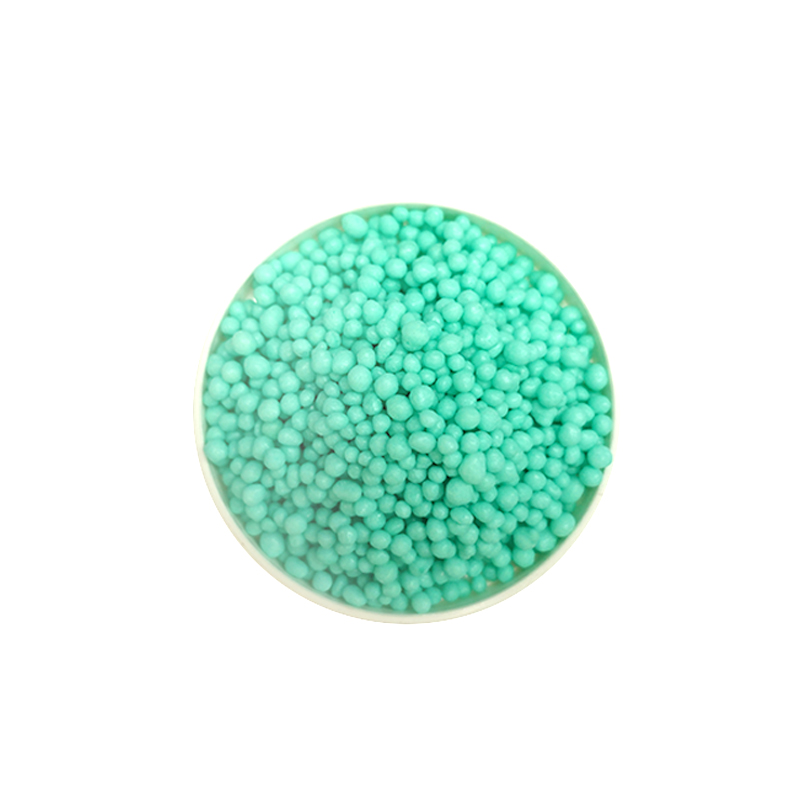Introduction
Urea is one of the most widely used nitrogenous fertilizers in the world, and it is essential for modern agriculture. The chemical structure of urea is dominated by nitrogen, which is why it is such an important fertilizer. The molecule of urea is formed under conditions of high pressure out of ammonia and carbon dioxide by a chemical reaction. This makes urea less expensive and also more productive for farmers.
Urea fertilizer is a prime source of nitrogen and, since nitrogen is one of the components of chlorophyll, that makes urea a vitally important source of nutrition. Chlorophyll is the substance that plants use to make food, their ‘fuel’, through photosynthesis. That is why, when urea is used in agriculture, not only is it providing vital nourishment, it is directly affecting yields and the success of an agricultural enterprise. As Helen Fisher, an agronomist, puts it: ‘The application of urea has changed agriculture such that higher yields and quality of crops are being produced than if no urea was used.
Today, urea fertilizer plays a role in every part of agriculture, from vast fields of wheat in North America to tiny vegetable farms in Asia. Its ubiquity reflects its importance. Food production depends on it, and food security in the world depends on food production.
Technological Advancements in Urea Fertilizer Production
There have been many technological innovations over recent decades in the manufacturing of urea fertilizer – it’s been a real race for efficiency and sustainability. Recently, improvements have been made in the way urea is synthesised and manufactured, which have improved the quality of the product itself and the way it is made.
They managed to do it by improving the efficiency of the synthesis process itself. Now the raw materials, ammonia and carbon dioxide from the air, are fed into sealed reactors containing advanced catalysts. These catalysts allow for a more complete conversion of the materials into urea, minimising the production of waste and emissions – a not inconsequential point, as the Haber-Bosch process is an energy-intensive one that can be two to three times more energy-hungry than producing equivalent amounts University of Warwick in the UK, says that improving catalyst efficiencies enhance yield and reduce the carbon footprint of urea production, and that there’s still plenty of room to continue down this path.
This is done through control systems that monitor all the controlling parameters (such as temperatures and pressures) in real time, providing correction during urea synthesis to keep conditions optimal. Cooling and purification systems throughout the sequence help to reduce the likelihood of hazardous scenarios, and guarantee consistent product quality.
It’s difficult to predict even into 2024, pundits claim, but the industry is investing in further advances in urea production technology: the use of renewable energies in manufacture, for example, which could help replace fossil fuels; and in smaller, modular plants that can be installed quickly and scaled up to demand without having to build much infrastructure.
The development of technologies for mass-producing urea fertilizer herald the beginning of more sustainable agricultural practices: they mark the start of an ongoing commitment to innovate in such a way as to meet the twin demands of food production and environmental sustainability.

Environmental Impact and Sustainable Practices in Urea Fertilization
The global production and use of urea fertilizer has raised concerns with the possible impact of land degradation, particularly through increased nitrogen leaching or runoff into waterways, leading to potential water pollution and the increasing eutrophication of aquatic ecosystems. This industry continues to improve its sustainability and reduce detrimental effects on the environment while ensuring the availability of an essential agricultural input.
The most significant sustainable practice in the application of urea fertilizer is the use of inhibitors of volatilisation, reducing the amount of nitrogen that can escape to the air in ammonia gas. The use of these inhibitors makes more nitrogen available for plant use and less is lost to the air. As the environmental scientist Dr Emily Roberts explains: ‘Urea inhibitors can reduce rates of volatilisation up to 70 per cent, making urea applications more plant-available and environmentally-sustainable.
Moreover, during the past decade the sector has also benefitted from the adoption of precision agriculture, such as the use of global positioning systems and sensors for applying urea at more precise levels and with greater efficiency. This means fertilizer is applied exactly where it’s needed in ways that minimise nutrient runoff and potential environmental degradation, improving the sustainability of urea use while also enhancing crop yields.
Another is that using urea sustainably supports wider ecological sustainability of farming practices, such as the development of integrated soil fertility management through the judicious use of organic and inorganic nutrient sources, which can help towards building balanced soil health and, potentially, reduced chemical inputs. Similarly, where inorganic fertilizers including urea are used in combination with various forms of organic matter, input such as commonly available or recovered biomass, soil structure can be improved and fertility boosted over time, which, in turn, leads to better water retention and increased nutrient utilisation efficiency.
By being implemented as the agricultural sector continues to develop, these sustainable practices will help reduce the environmental footprint of integral urea fertilizer while also providing for a growing requirement for food production. The further development and utilisation of such practices will help maintain harmony between agricultural production and environmental protection.
New Formulations and Application Techniques of Urea Fertilizer
Through new formulations and application methods, we’ve made urea fertilizer safer, cleaner and more effective. When it comes to selecting the right fertilizer, it’s important to be open-minded and do our homework. Innovations in fertilizer formulations and application techniques have improved agricultural sustainability by better matching nutrient supply with crop demand, as well as reducing greenhouse-gas emissions and nitrogen losses. As our global population continues to grow – to 9 billion by 2050 – we have the opportunity and responsibility to do more with less in order to feed a growing world population.
Another novel avenue being explored is slow-release and controlled-release urea formulations, based on technologies that encapsulate urea in materials that degrade slowly under certain environmental conditions (eg, in the microbes present in soils or with changes in soil pH). The advantage of these technologies is that they make nitrogen available only when it is most needed by the plant at the critical growth stages, thereby conserving nutrient uptake efficiencies and reducing risk of environmental pollution.
In fact, changes in application technology have allowed for increasingly sustainable use of urea fertilizer. Drone technology and sensor-based systems are now integrated in precision farming. In modern agriculture, these tools are used to apply fertilizers on the basis of real-time information about plant growth/soil health. For example, if a specific crop requires more nutrients with respect to water and sun (an undesirable situation that may affect health), urea is applied to remedy the problem and improve the crop despite the unfavourable conditions.
This cuts back on fertilizer use and maximises its efficiency. ‘Because of GPS technology and monitoring systems in real time, we know exactly where and when to apply fertilizer, and this gives us huge sustainability gains,’ says Dr Aaron Smith, a technology specialist in precision agriculture.
These new formulations and application methods not only improve the environmental sustainability of urea fertilizer, but also deliver economic benefits such as minimised input costs and improved yields. In the future, we can expect to see this technology become increasingly more important in overhauling farming practices across the world.

Economic Trends and Market Dynamics for Urea Fertilizer in 2024
Global Market Trends: Urea demand will continue to grow as long as the world needs increased agricultural productivity to feed a steadily growing population. But in the immediate future this demand will be subject to sudden shifts and volatility, reflecting movements in the global commodity prices that can immediately impact on urea prices and availability. Market analysts see urea demand rising steadily in high growth regions such as Asia and Africa where agricultural expansion and intensification continue.
Economic factors influencing urea prices: Natural gas as primary input in urea production has impact on urea prices, more the volatility in energy markets, more the volatility in urea prices. Trade polices play significant role in cost and flow of urea world over. This sensitive market is getting worried about Geo political changes and economic policies.
Production costs: The advancement in production technology as described in the previous sections not only increases the efficiency, but also will influence the production cost. Lowering energy input and enhancing the production efficiency will help urea producers to address some of the cost pressure.
Supply Chain Dynamics: The urea fertilizer supply chain is very complex, beginning with raw material demand and culminating in warehouses and retailers. Two main concerns influencing supply chain dynamics are the availability of raw materials such as natural gas and ammonia, and the logistics and related regulations in urea transportation. Effective supply chain management enables the balance between supply and demand for urea, and helps ensure that fertilizer is available in time and at the right price for its intended consumers.
Stakeholders of the urea fertilizer market must adjust themselves to the swift changes in the economic patterns and the shifting market dynamics, to adapt to the emerging trends in the market in 2024.
Conclusion
Now, as we reach the year 2024, and look toward the future beyond, the role of urea fertilizer in world agriculture will be brightened by a host of both old and new refinements and advances. These, as we have noted, will ensure the continued strategic importance of urea fertilizer in meeting both the world’s rising needs for food and those for its environmental sustainability.
Strong technical innovation related to urea fertilizer will remain a crucial factor. Improved efficiency fertilizers, innovative precision application techniques, and ecological manufacturing processes will continue to drive economic performances and help urea to play a significant role in agricultural modernisation in the coming years. They will also reinforce its role within the global environmental protection efforts.
However, urea fertilizer will have to deal with several new developments in the not-so-distant future: a rising tide of regulation and increased costs of raw materials and competition from more environmentally friendly fertilizer products. Stakeholders will have to remain agile and forward looking, both in new technology and strategic market positioning.
In the long term, there is no question that urea fertilizer is and will be important to global food security. Over time, its development and use will be an important factor in the degree to which agricultural productivity is able to grow in a world of increasing population. It is hard to say where we have been with urea production, but the journey may have seemed long. By contrast, the journey ahead is likely to be one where new windows of opportunity open, innovation prevails, and adaptability is truly essential.
Here are some academic references related to urea fertilizer:
- Modified Urea Fertilizers and Their Effects on Improving Nitrogen Use Efficiency: This article reviews various modifications of urea fertilizers to enhance nitrogen use efficiency, which is crucial for reducing environmental impact while maintaining agricultural productivity. The study discusses different types of slow and controlled-release fertilizers and their mechanisms, offering insights into how these modifications impact crop productivity and nitrogen utilization (MDPI, 2024).
- Agronomic Assessment of a Controlled-Release Polymer-Coated Urea-Based Fertilizer in Maize: This research evaluates a new ecological polymer-coated urea fertilizer compared to traditional urea in maize cultivation. It highlights the benefits of the controlled-release formulation in improving nutrient use efficiency and reducing environmental impacts, with findings indicating significant yield improvements and better soil properties (MDPI, 2021).
- Long-Term Effects of Controlled-Release Nitrogen Fertilizer on Soil Health: An in-depth study examining the long-term application of controlled-release nitrogen fertilizer on soil biological properties. The research reveals that such fertilizers help maintain more stable bacterial communities and improve nitrogen cycling functions in the soil, enhancing overall soil health and sustainability (MDPI, 2024).







